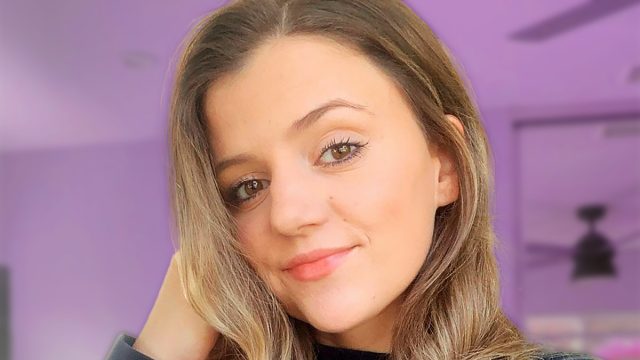Weight Loss Coach Shares 5 Key Reverse Dieting Hacks
Are you curious about reverse dieting? Kelly Nicole is a reverse dieting coach who has helped over 4,200 women achieve their fat loss goals. In a new social media post she reveals her top 5 reverse dieting hacks. "Five reverse dieting tips you need to know to maintain fat loss results," she writes in an Instagram video. "Gaining body fat back after your cut? These five tips will help you reverse diet and maintain your results properly," she adds in the caption. Also, here is everything else you need to know about the concept.
1. Weigh Yourself Daily
Number one, weigh yourself daily, Kelly encourages. "If you only weigh yourself one time a week, you're not getting the full picture of your body's responsiveness. The more data, the better," she says in the clip.
2. Don't Follow a Formula
Next, be careful with your calculations. "Number two, don't follow a formula like adding in 50 to 100 calories every week," she says. "When increasing your calories, increasing with a formula can lead to unnecessary fat gain because you're increasing calories too early."
3. Understand the Purpose of Your Reverse Diet
Also, intentions matter. "Number three, decide the purpose of your reverse diet," she says. "Do you want to reverse your diet to a surplus, or do you simply want to reverse your diet to maintain your fat loss results? The answer to that question will determine how far you'll take your reverse diet."
4. Don't Reverse to a Goal Intake
"Number four, don't reverse to a goal intake," she says. "While you may want to maintain your weight at 2,400 calories, that doesn't mean that you can. Your new maintenance should be based on your weight trend, your progress pictures, and your biofeedback," she says.
5. Be Adherent
"And last but definitely not least, actually be adherent," she suggests. "Yes, calories are going up in a reverse diet, and you can eat more, but it's not a free-for-all. The more adherent you are during the reverse site, the better your results will be," she says.
RELATED: Woman Lost 50 Pounds on the 5050 Diet and Never Felt Hungry
What Is Reverse Dieting?
Reverse dieting is a strategy that many people use after a regular diet. "A reverse diet is when you slowly increase your calorie intake after a period of reduced calories or dieting," Registered dietitian Natalie Romito, RD, LD, tells Cleveland Clinic. "It's a way to reach a point where you're eating to maintain your weight loss."
Here Is What It Can't Do
"A reverse diet isn't a fad or gimmick," she continues. "It's a strategy for adding calories after restricting or dieting to avoid unwanted weight gain." There are two things that it can't help with, however. The first is speeding up metabolism, and the second is muscle maintenance. "Some people claim that reverse dieting helps maintain muscle. But the way you were eating before the reverse diet affects muscle maintenance more than the reverse diet does," she says.
How to Reverse Diet
Romito explains that to reverse diet, you need to track your calorie intake and weight while adding a few calories a week at a time. For example, if you were eating 1,500 calories a day for weight loss, here's how the reverse diet would work: The first week, you would eat 1,600 calories and track your weight. If you are still losing weight, increase calories to 1,700 for the next week. If you are still losing weight, increase it to 1,800 the next week. "Once you get to a daily calorie intake where you're not losing or gaining weight, your reverse diet is done. You now know how many calories to eat daily to maintain your current weight," the Cleveland Clinic writes. "Adding 50 to 150 calories at a time is a good range," Romito says.
RELATED: Dad Drops 125 Pounds in Just 13 Months By Eating These Foods Every Day
You Can Adjust It
You can also spend two weeks instead of one week on each new calorie amount. "This can be especially helpful if your day-to-day weight tends to fluctuate a lot. The longer period will make it easier to see if your weight is going up, going down, or staying steady," they write. Romito adds that after reverse dieting, you'll usually add 200 to 500 calories. However, it's important to keep eating healthy, whole foods.
Reverse Dieting Is Safe
Reverse dieting is safe. "The diet you follow before the reverse diet is more likely to be a concern," says Romito. "A concerning diet would be any extremely restrictive way of eating that causes you to lose muscle or any diet that's too extreme to sustain." And if you enjoyed this article, take advantage of these 15 Quick Ways to Lose Body Fat Percentage in a Week.





